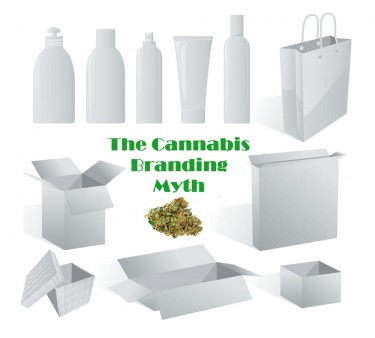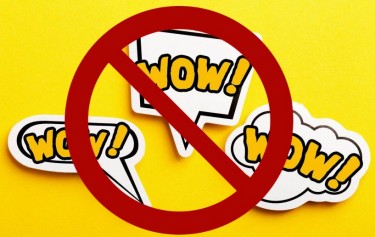
Inflation proves once again that cannabis branding is irrelevant
At the beginning of the ongoing inflation and recession, many cannabis skeptics and advocacy groups believed that the industry could suffer significantly at the peak of inflation. You were wrong! Despite increasing life difficulties, American marijuana users are consuming the same amount of marijuana or more than a year ago. This is supported by a recent survey commissioned by Jushi Holdings Inc. by independent market research firm Pollfish.
Although most stoners and medicinal users tend to purchase cheaper cannabis products to combat inflation, the reason for this surge in demand is still unclear. The newly released 2022 World Drugs Report by the United Nations Office on Drugs and Crime (UNODC) argues that increasing use of cannabis in North America as a result of legalization, the COVID-19 epidemic and related lockdowns is the main reason demand is high. In another analysis, Brightfield Group predicted that this growth could see the national leisure market reach $30.6 billion by 2025.
Cannabis use during ongoing inflation
The majority (52%) of the 1,000 Americans ages 21 and older who participated in the Pollfish study of cannabis use, legalization, holiday shopping and consumption habits said they still smoke about the same amount of marijuana as they did a year ago. Additionally, about a quarter (24%) said they use cannabis even more than they did the year before, according to Forbes. The study specifically discovered a shift in consumer interest from brand or strain type to THC levels and price ranges. Julian Scaff, Director of Jushi Experience and Associate Professor at ArtCenter College of Design, led the study.
Consumers are buying more flowers, which have a 6% market share year-over-year, and fewer pre-rolls, edibles, tablets, tinctures, and liquids. The researchers claim that prices are likely driving this trend, as finished goods are often more expensive than flowers. And while most cannabis consumers are switching to lower-cost options, oddly enough, on average, 29% of consumers are spending more, while about 44% are paying for marijuana the same as a year ago.
In general, the majority spend between $50 and $100 per month (35%), while 23% spend between $100 and $150 per month. The trends come as Americans continue to feel economic pressures and core inflation hit a 40-year high in September, according to another Reuters/Ipsos survey.
While every consumer-focused survey ever conducted among marijuana users shows cannabis branding to be a myth, many marketers whose paychecks depend on making cool logos and boxes refuse to acknowledge the data showing that consumers don’t remember what they bought, what size the box was, what colors were on the box, etc. They only remember the price they paid, the effect they made, and how long or long it was takes time to get the product. Why doesn’t branding work on weed? Cannabis is a plant that can grow in 8 to 12 weeks, indoors or outdoors, it’s a commodity like tomatoes, kale and broccoli. If your branding can’t produce better broccoli, the consumer will turn to the cheaper product that will get the job done. There’s a reason Bud and Bud Light are the best-selling beers in America. They’re cheap, do the job the consumer wants, and are easily accessible anywhere.
Cannabis use before the recession
According to statistics, sixteen percent of Americans are actively using marijuana, which is statistically comparable to the 12 to 13 percent reported by Gallup more than doubled between 2016 and 2021. According to another survey, 48% of adults say they have at least tried marijuana, in line with the range of 43% to 49% observed since 2015.
These statistics come from Gallup’s annual Consumption Habits Survey, July 5-26, 2021. Similar percentages of men (18%) and women (14%) also reported using cannabis; However, smoking rates vary among other demographic groups. For more context, three in 10 young adults (ages 18 to 34) report using marijuana, compared to about half of adults (ages 35 to 54) and even fewer adults (ages 55 and over). ) who report using the drug, students with a college degree (12%) are similarly likely to smoke marijuana as those without (18%), Republicans (12%) and Democrats (20%) are more likely than Independents (17%) reported smoking marijuana.
Vapes and pre-roll joints are among the most popular cannabis items available in dispensaries. According to Headset, vape pens generated big bucks for cannabis shops between 2020 and 2021 and are the second largest category in the US market by revenue. Vapes trailed flowers in California, Colorado, Michigan, Oregon, and Washington in 2021, grossing nearly $2.6 billion (or about $8 per US cannabis user).
Cannabis remains recession-proof
According to industry experts, most cannabis users devote themselves to their drug as much as they do to other necessities like toilet paper, prescription drugs, and alcohol. Joe Devlin, a former cannabis regulator in Sacramento, Calif., then senior vice president at Ikänik Farms, based in the state capital, stated in 2020 that he thought the marijuana industry was “relatively recession-proof,” largely because it sells alongside liquor and spirits had been categorized as tobacco. In his opinion, using cannabis is a way for people to relax and take care of themselves. Also, they probably won’t cut it out of their budgets entirely.
Legalization of cannabis in the United States
Marijuana is prohibited under federal law, but in recent years many states have legalized the herb for medicinal or recreational uses. The evolving legal landscape corresponds with the tremendous increase in public support for legalization, which is supported by most Americans. The US Congress is working to pass major federal cannabis laws. In April 2022, the House of Representatives passed legislation that would legalize cannabis across the country. President Biden has also taken steps that could lead to federal decriminalization of marijuana.
Due to the lack of federal legislation, cannabis companies still do not have access to institutional financing and standard banking services in states that allow recreational sales. Such restrictions would be lifted by a federal law known as the Secure and Fair Enforcement Banking Act (SAFE), which has passed the House of Representatives multiple times but has yet to be approved by the Senate.
bottom line
Americans have had to deal with historically high inflation, a rapid Federal Reserve rate hike, a slowdown in housing activity, high unemployment and sluggish economic growth over the past year. While cannabis consumers in the United States are still adjusting to inflationary pressures, which are relatively new in North America but fairly typical elsewhere in the world, they have refused to let them significantly affect their cannabis needs and habits. It’s worth noting that most dispensaries have started stocking cheap and affordable products to keep up demand and ensure customers continue to have access to legal cannabis.
THE CANNABIS BRAND MYTH CONTINUES FALLING, READ MORE…

ALL CONSUMER SURVEYS SHOW THAT CANNABIS BRANDING IS A MYTH!
OR..

WHY YOUR CANNABIS BRANDING IS NOT WORKING – READ THIS!

Post a comment: